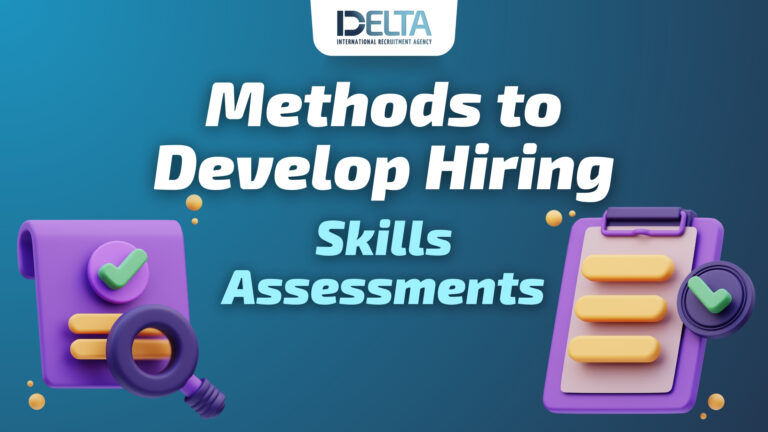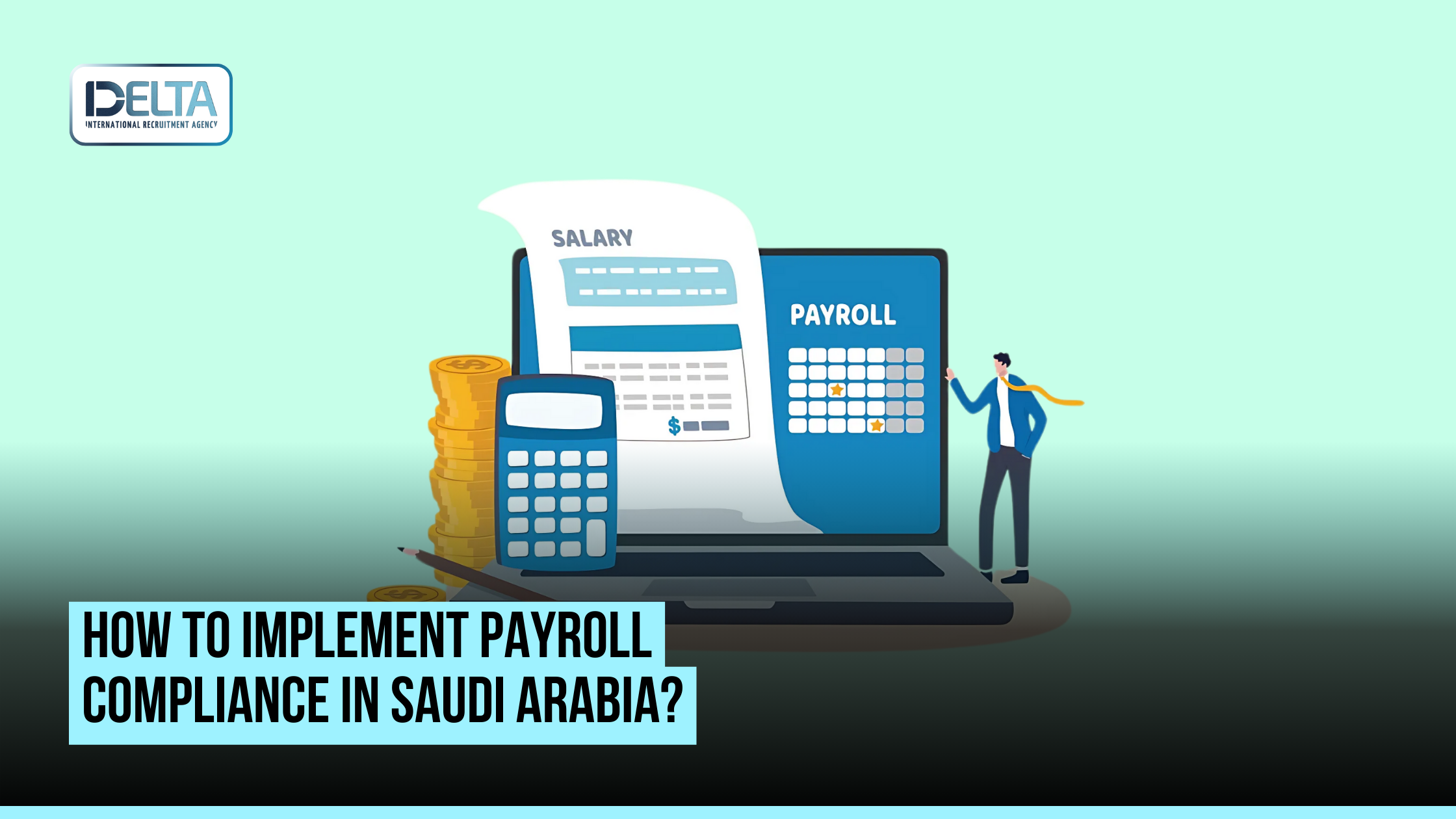Why Hiring Skills Assessments Matter
The Importance of Assessing Skills in the Hiring Process
Assessing skills in the hiring process is crucial for several reasons:
- It provides candidates with an early job preview, allowing them to determine if the role is a good fit for them.
- By assessing candidates’ abilities early on, companies can save time and resources by focusing only on qualified candidates.
- Thoroughly assessing candidates’ skills improves the quality of hire, ensuring that companies make informed hiring decisions.
- Skill-based hiring practices promote diversity and inclusivity, as candidates are evaluated based on their competencies rather than their resumes.
- Implementing skill-based hiring practices helps build a pipeline of top-quality candidates for future positions.
- Assessing skills early in the hiring process minimizes unconscious bias and ensures that initial screening decisions are data-driven.
How Hiring Skills Assessments Can Improve Hiring Decisions
Hiring skills assessments can have a significant impact on hiring decisions. Here’s how:
- Objective evaluation: Assessments provide an objective way to evaluate candidates’ skills and abilities, removing bias and subjective judgments.
- Identifying top talent: By assessing candidates’ competencies, organizations can identify top talent that may have been overlooked based solely on resumes.
- Promoting diversity and inclusion: Assessments help organizations build a diverse talent pool by identifying demographic changes among job candidates.
- Saving time: AI-assisted assessments can save time by quickly evaluating candidates’ abilities, allowing hiring managers to focus on qualified candidates.
- Improving quality of hire: Thoroughly assessing candidates’ skills ensures that companies make more informed hiring decisions and bring on board individuals with the required skill sets.
Common Challenges in Assessing Hiring Skills
Assessing candidates’ skills during the hiring process can be challenging. Here are some common challenges employers face and how to overcome them:
- Limited information: Resumes and interviews may not provide enough insight into candidates’ skills and potential. Consider using skills assessments to gather more objective data.
- Time and resource constraints: Assessing skills takes time and resources. To overcome this challenge, leverage technology to streamline the assessment process and make it more efficient.
- Subjectivity and bias: Assessments should be designed to minimize subjectivity and bias. Use standardized assessment methods and involve subject matter experts in the development process.
- Lack of alignment with job requirements: Ensure that the assessments align with the specific job requirements. Define the key competencies and skills needed for the role and design assessments that accurately measure them.
Types of Hiring Skills Assessments
Technical Assessments: Evaluating Job-Specific Skills
Technical assessments are a crucial part of evaluating job-specific skills. These assessments focus on assessing an individual’s proficiency in specific technical areas that are relevant to the role. They may involve written aptitude tests, multiple choice questions, hands-on demonstrations, or job-specific work samples. The goal of a technical assessment is to determine the candidate’s current level of skill and compare it to the skills required for the job. By using technical assessments, employers can ensure that candidates have the necessary technical expertise for the role.
Behavioral Assessments: Assessing Soft Skills and Cultural Fit
Behavioral assessments are an important tool for evaluating candidates’ soft skills and cultural fit. These assessments focus on assessing behavioral competencies such as communication, teamwork, leadership, problem-solving, and adaptability. By evaluating these skills, employers can gain insights into how candidates handle challenging situations and work with others.
When conducting behavioral assessments, it is recommended to include members from different teams or departments in the interview panel to gain diverse perspectives. This can provide a more comprehensive evaluation of candidates’ cultural fit within the organization.
Some tips for conducting effective behavioral assessments include:
- Asking behavioral-based questions that require candidates to provide examples of past experiences and how they handled specific situations.
- Observing candidates’ non-verbal cues and body language during the assessment to gain additional insights.
- Considering the relevance of the assessed behavioral competencies to the specific job role.
By incorporating behavioral assessments into the hiring process, employers can make more informed decisions about candidates’ soft skills and cultural fit, leading to better hiring outcomes.
Cognitive Assessments: Measuring Problem-Solving and Critical Thinking Abilities
Cognitive assessments measure problem-solving and critical thinking abilities. They evaluate skills like critical thinking, reasoning, memory, decision-making, and problem-solving. These assessments provide insights into an individual’s cognitive abilities and help guide the development of targeted training programs. Focus groups and interviews can also provide valuable information about an individual’s skills and contribute to company-wide training.
Best Practices for Developing Hiring Skills Assessments
Defining Job Requirements and Competencies
The job description should clearly outline the objectives and key results (OKRs) of the role, highlighting how the role contributes to solving client problems and achieving company goals. A well-written job description further helps in narrowing down the required skill sets and competencies, allowing recruiters to focus on the most critical aspects.
With the job description established, the next step is to define the profile of the ideal candidate. This profile should be an amalgamation of the job analysis and the job description. It should prioritize the top skills, experiences, qualities, and competencies that the candidate should possess. Defining the candidate’s profile ensures a targeted approach to evaluating candidates’ suitability for the role.
Utilizing AI for Skill Test Creation
Once the job analysis, job description, and candidate’s profile are clearly defined, companies can utilize AI technology to create skill tests. AI-powered platforms, such as Discover, allow companies to input the necessary criteria and generate customized skill tests that assess the specific competencies required for the role. This automated process saves time and ensures consistency in evaluating candidates’ skills.
Implementing Structured Interviews
Structured interviews are another effective method for assessing job requirements and competencies. These interviews involve asking all candidates the same set of predetermined questions, allowing for a fair and objective evaluation. By using a standardized interview format, recruiters can focus on the key competencies identified in the job description and candidate’s profile.
Leveraging Behavioral Assessments
Behavioral assessments, such as situational judgment tests or personality assessments, can provide valuable insights into a candidate’s behavioral tendencies and how they may perform in specific job-related situations. These assessments can help identify candidates who possess the desired competencies and align with the company’s culture and values.
Regularly Reviewing and Updating Job Requirements
Job requirements and competencies can evolve over time due to changes in the industry, technology advancements, or organizational needs. It is essential for companies to regularly review and update job requirements to ensure they remain relevant and aligned with the company’s goals and objectives. This ongoing review process helps in identifying any gaps or areas for improvement in the hiring process.
Designing Valid and Reliable Assessment Methods
When designing assessment methods, it is important to ensure that they are valid and reliable. Validity refers to the accuracy and relevance of the assessment in measuring the desired skills or competencies. Reliability, on the other hand, refers to the consistency and stability of the assessment results. Here are some tips for designing valid and reliable assessment methods:
- Consider different aspects of validity, such as content, criterion-related, construct, face, and consequential validity.
- Use a mix of quantitative and qualitative methods for a holistic view.
- Develop tools, such as questionnaires, interview guides, or checklists, that extract relevant and actionable information.
- Ensure that the assessment methods are designed to be fair and unbiased.
Remember, designing valid and reliable assessment methods is crucial for making accurate hiring decisions.
Ensuring Fairness and Unbiased Evaluation
When developing hiring skills assessments, it is crucial to ensure fairness and unbiased evaluation. Here are some tips to achieve this:
Involving Subject Matter Experts in Assessment Development
When developing hiring skills assessments, it is important to involve subject matter experts (SMEs) in the assessment development process. SMEs have the knowledge and expertise in the specific job roles and competencies being assessed, making them valuable contributors to the assessment design.
Here are some key considerations when involving SMEs:
- Tap into their expertise: SMEs can provide insights into the essential skills and competencies required for the job. Their input can help ensure that the assessment accurately measures the desired skills.
- Collaborate on tool development: Work closely with SMEs to develop the tools needed for the assessment, such as questionnaires, interview guides, or checklists. Their input can help create tools that extract relevant and actionable information.
- Ensure diversity of participants: It is important to select SMEs who represent various roles and departments within the organization. This inclusivity provides a comprehensive understanding of training needs across the entire workforce.
- Collect data: With the tools and participants in place, execute the assessment and collect data. This data will provide valuable insights into the skills and competencies of candidates.
Involving SMEs in assessment development ensures that the assessments are well-designed, accurate, and aligned with the job requirements. Their expertise and collaboration contribute to the effectiveness of the hiring skills assessments.
Leveraging Technology for Efficient Assessment Processes
Technology plays a crucial role in making hiring skills assessments more efficient and effective. Here are some ways organizations can leverage technology:
- Remote proctoring technology allows for offsite assessments while confirming the participant’s identity.
- AI technology can be used to eliminate bias in the early careers talent acquisition program.
- AI-assisted assessments save time and remove bias, leading to better talent decisions.
By embracing technology, organizations can streamline their assessment processes, save time, and make more informed hiring decisions.
Implementing Hiring Skills Assessments
Implementing Hiring Skills Assessments
Integrating Assessments into the Hiring Workflow
Assessments can save time and remove bias, leading to better talent decisions. When in-person hiring stalled during the pandemic, more organizations turned to talent assessments to provide key information for hiring decisions. In the past four years, more than 48 million people have completed an Aon assessment, representing an increase of 50% over that time. Since then, organizations continue to use data from assessments to objectively measure potential, deliver goals related to diversity, equity and inclusion and developing future skills. As leaders increasingly recognize the benefits of assessments, integrating them into the hiring workflow has become essential.
- Assessments provide objective and fair insights into candidates’ skills and competencies.
- They help streamline the recruitment process and save time.
- By assessing candidates early on, organizations can minimize unconscious bias in the screening process.
Tip: By starting with a job-relevant assessment, hiring teams can ensure they spend their time with skilled, quality candidates, reducing the number of resumes they need to review and saving time in the process.
Fun fact: 74% of employers using skills-based hiring in 2023 reduced their cost-to-hire.
Training Hiring Managers on Assessment Administration
Training hiring managers on assessment administration is crucial for ensuring accurate and effective assessment processes. Here are some key points to consider:
- Provide comprehensive training on the assessment tools and techniques to ensure consistency and fairness in evaluation.
- Emphasize the importance of using evidence-based assessments to make informed hiring decisions.
- Build skills and confidence in interviewing and selecting the right talent.
- Encourage managers to actively engage with assessment results and use them as a basis for further discussions with candidates.
Remember, well-trained hiring managers play a vital role in the success of hiring skills assessments.
Collecting and Analyzing Assessment Data
Once the data collection methods are chosen, the next step is developing the tools needed for the assessment. These could include questionnaires, interview guides, or checklists. These tools should be designed to extract relevant and actionable information.
- Select participants: The diversity of your participants is crucial for a well-rounded assessment. Ensure a mix of different backgrounds and perspectives to gain comprehensive insights.
- Implement data collection: Execute the data collection phase diligently, ensuring transparency and participant understanding.
- Analyze the skills gap: Use statistical tools, qualitative analysis methods, or a combination of both to identify patterns, trends, and areas that require attention. Transform raw data into actionable insights.
- Review and update: Regularly review and update your assessment methods to ensure their effectiveness
Using Assessment Results to Inform Hiring Decisions
Assessment results are valuable in making informed hiring decisions. Here are some ways to effectively use assessment results:
- Use assessment results to rank candidates: Review the results of the assessments to determine the top-performing candidates. TestGorilla’s benchmarking tools can help automatically rank candidates based on their performance.
- Ask better interview questions: Use the assessment results to guide your interview questions. This can help you delve deeper into specific areas of strength or weakness identified in the assessments.
- Support onboarding and development: Incorporate the assessment results into the onboarding process to tailor training and development plans for new hires.
- Enable career conversations: Assessment results can serve as a starting point for career discussions between managers and employees, empowering individuals to take ownership of their career growth.
Remember, assessment results provide objective insights that can enhance the hiring process and lead to better talent decisions.
Evaluating the Effectiveness of Hiring Skills Assessments
Evaluating the Effectiveness of Hiring Skills Assessments
Measuring the Impact on Hiring Success
Measuring the impact of hiring skills assessments is crucial for evaluating their effectiveness. By tracking key metrics and KPIs, you can gain valuable insights into the recruitment and hiring process. These metrics provide quantitative data that can help you assess the performance and efficiency of your assessments. Some important recruitment metrics to consider include time-to-hire, quality of hire, and candidate satisfaction. By analyzing these metrics, you can identify areas for improvement and make data-driven decisions to optimize your hiring strategy.
Assessing Candidate Satisfaction with the Assessment Process
Assessing candidate satisfaction with the assessment process is crucial to ensure a positive candidate experience. Here are some key points to consider:
- Collect feedback: After candidates have completed the assessment, ask for their feedback on the process. This can be done through a survey or a follow-up interview.
- Address concerns: If candidates express any concerns or dissatisfaction, take the time to address their issues and provide clarification. This shows that you value their input and are committed to improving the assessment process.
- Communicate the value: Emphasize the importance of the assessment in the hiring process and how it helps identify the best-fit candidates. This can help candidates understand the purpose behind the assessment and feel more engaged.
Tip: Remember that candidate satisfaction with the assessment process can impact their overall perception of your company and influence their decision to accept a job offer.
- Continuous improvement: Regularly review and evaluate the assessment process to identify areas for improvement. This can include streamlining the process, updating assessment methods, or incorporating candidate feedback.
- Transparent communication: Keep candidates informed about the assessment timeline, next steps, and any updates. Clear and timely communication helps manage expectations and reduces candidate anxiety.
- Candidate-centric approach: Design the assessment process with the candidate in mind. Consider their experience, provide clear instructions, and ensure the process is user-friendly.
Remember, a positive candidate experience can enhance your employer brand and attract top talent.
Tracking Employee Performance and Retention
Tracking employee performance and retention is crucial for organizations to understand the effectiveness of their hiring skills assessments. It allows them to measure the impact of the assessments on employee success and satisfaction. Here are some ways to track employee performance and retention:
- Performance Management: Implement a performance management system to track employee progress and achievement. This helps identify any problems early and provides opportunities for improvement.
- Employee Feedback: Regularly gather feedback from employees to understand their satisfaction and engagement levels. This can be done through surveys, one-on-one meetings, or anonymous suggestion boxes.
- Retention Metrics: Monitor key retention metrics, such as turnover rate and average tenure, to assess the effectiveness of the hiring skills assessments in retaining employees.
- Exit Interviews: Conduct exit interviews with departing employees to gather insights into their reasons for leaving and identify any areas for improvement.
By tracking employee performance and retention, organizations can continuously evaluate and improve their hiring skills assessments to ensure they are effective in selecting and retaining top talent.
Common Mistakes to Avoid in Hiring Skills Assessments
Common Mistakes to Avoid in Hiring Skills Assessments
Relying Solely on Resumes and Interviews
Traditional methods of assessing candidates solely based on their resumes have limitations, as they often fail to capture the full extent of an individual’s skills and potential. Skill-based hiring goes beyond the surface level and delves deeper into a candidate’s capabilities. By using skill assessments, recruiters can gather objective facts and make more informed decisions. Here are some benefits of using skill assessments:
- Reduces mis-hiring by encouraging recruiters to use objective facts
- Removes the need for recruiters to rely solely on resumes
- Provides a more comprehensive understanding of a candidate’s skills and potential
Implementing skill assessments early in the hiring process can save time and effort by allowing recruiters to focus on the best candidates from the start. It also helps minimize unconscious bias by making initial screening decisions data-driven. By using skill assessments, employers can improve their talent acquisition process and find the right candidates for their organizations.
Using Generic or Outdated Assessment Methods
Using generic or outdated assessment methods can hinder the effectiveness of hiring skills assessments. It is important to stay up-to-date with the latest assessment techniques and tools to ensure accurate and reliable results. Here are some key points to consider:
- Stay Current: Regularly review and update your assessment methods to align with industry best practices and evolving job requirements.
- Customize Assessments: Tailor assessments to specific job roles and competencies to accurately evaluate candidates’ skills and fit.
- Leverage Technology: Use modern assessment platforms and tools to streamline the assessment process and gather data efficiently.
- Consider Multiple Methods: Combine different assessment methods, such as behavioral assessments, cognitive assessments, and technical assessments, to gain a comprehensive understanding of candidates’ abilities.
Remember, using generic or outdated assessment methods can lead to inaccurate assessments and potentially result in hiring the wrong candidates.
Ignoring Diversity and Inclusion in Assessment Design
When developing hiring skills assessments, it is crucial to consider diversity and inclusion. Ignoring these factors can lead to biased assessments and hinder the goal of promoting a diverse and inclusive workforce. Here are some key points to keep in mind:
- Consider demographic changes: Assessments can help organizations understand and build diversity in their talent pool by identifying demographic changes among job candidates across different sectors.
- Remove bias with AI-assisted assessments: AI-assisted assessments can save time and remove bias, leading to better talent decisions.
- Align assessments with diversity goals: Ensure that assessments are designed to measure potential, deliver goals related to diversity, equity, and inclusion, and develop future skills.
By incorporating diversity and inclusion into assessment design, organizations can create a more inclusive hiring process and make better talent decisions.
Failing to Align Assessments with Job Requirements
When developing hiring skills assessments, it is crucial to ensure that the assessments align with the specific job requirements. Failing to do so can result in ineffective assessments and poor hiring decisions. Here are some key points to consider:
- Conduct a thorough job analysis to identify the essential skills and competencies needed for the role.
- Design assessment methods that accurately measure the required skills and competencies.
- Avoid using generic or outdated assessment methods that do not reflect the job requirements.
- Involve subject matter experts in the assessment development process to ensure alignment with job requirements.
- Regularly review and update assessments to keep them aligned with evolving job requirements.
Remember, aligning assessments with job requirements is essential for accurately evaluating candidates and making informed hiring decisions.
Want to recruit manpower for Romania? Delta International can be your #1 choice recruitment agencies for Romania based in Pakistan for overseas recruitment.
Updates: Methods to Develop Hiring Skills Assessments




